The Intellect Devourer in Dungeons and Dragons is an unusual looking creature. It’s very appearance is terrifying. It looks like a brain with legs. And it’s abilities are equally frightening.
The Intellect Devourer in Dungeons and Dragons made it’s first appearance in in the Eldritch Wizardry supplement for Original Dungeons and Dragons in 1976. It has been present in most of the later editions including second, third, fourth and fifth.
These creatures are chaotic. And they are very evil. They are masters of psychic powers and often dominate their enemies by controlling their minds. They could consume an opponent’s mind and then use their body as a host.
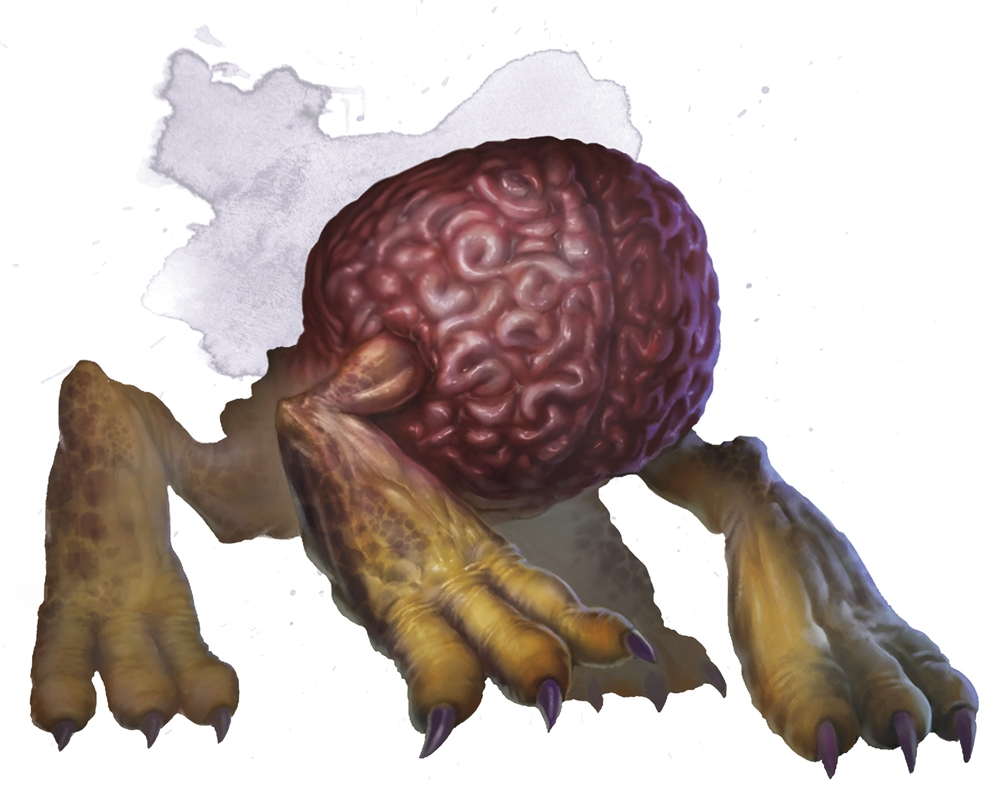
The Intellect Devourer in Combat
These foul creatures are able to attack with their claws if they choose to do so. But their primary form of attack is with psionic energy. In fact they live off of this energy. And they consume this energy from their victims.
In early editions of Dungeons and Dragons, which include psionic combat and abilities for player characters, this creature was a danger to those with psychic powers. The creature could sense the use of psionic abilities nearby and would stalk the user of them. The creature would wait for an opportune moment to attack such as when the user was engaged in combat with something else. It would then attack by surprise. It would leap upon it’s victim and tear with it’s claws while simultaneously using psionic attacks such as ego whip or id insinuation. The Intellect Devourer would then insert itself into the body of the victim and make them it’s host. Using this new body it would look for new victims to devour in the same manner.
In fifth edition the creature has changed. Psionics are not a part of the core of this edition of Dungeons and Dragons but the creature has been included nevertheless. So the nature of the beast has been modified for this edition. Instead of using a psionic attack it makes an attack on the intelligence of it’s victim. Anyone that the devourer sees that has a brain is potentially a target. This target must make a DC 12 intelligence saving throw or take 2D10 psychic damage. Additionally the victim must roll 3D6 and if this number exceeds their intelligence score than the intelligence score is reduced to zero. The target remains stunned until regaining at least one point of intelligence. The fifth edition Intellect Devourer can initiate an intelligence contest with an incapacitated humanoid within five feet of it. If it wins the contest it will devour the target’s brain and then teleport itself in it’s place.
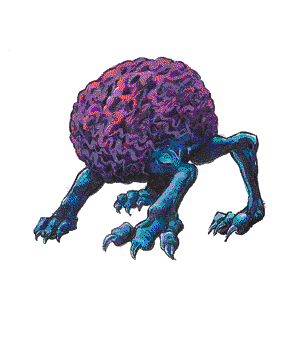
The Host of the Intellect Devourer
When the creature places itself into the body of a victim it is safe from the dangers of the outside world. It’s host will take the damage from anyone attempting to attack it until the host is reduced to zero hit points. At this point the creature must leave the body of it’s host and is again at risk.
While in a host body the Intellect Devourer in Dungeons and Dragons gains the knowledge of the person it has taken over. It knows their spells and languages (in fifth edition at least).
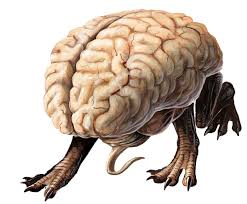
The Intellect Devourer in Dungeons and Dragons likes places in the dark
These creatures lurk in the shadows in places deep beneath the earth. They are inhabitants of places like the Underdark. Different forms of Dungeons and Dragons have stated different things about the origins of these creatures. The Fifth Edition Monster Manual states that they are creatures of the Illithids. This edition holds that the Mind Flayers breed these creatures .
In Advanced Dungeons and Dragons First Edition these creatures were found in other places. The Monster Manual for this edition mentions nothing about any connection to the Mind Flayer. Instead it says that the Devourers often travel the ethereal and astral planes.
The Intellect Devourer had special abilities involving darkness in 1st edition as well. The creature had the natural ability to hide in the shadows as a 10th level thief. Normal weapons could not hit the creature. One had to use a magical weapon of +3 or better to hit the creature and do damage. When struck with one of these weapons they would take only 1 point of damage. But bright light would drive them off.
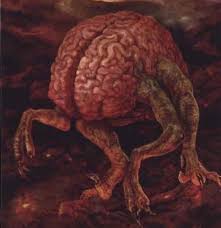
Killing an Intellect Devourer in Dungeons and Dragons
These special defenses made the 1st edition Intellect Devourer difficult to kill. But certain spells would harm it nevertheless. A fireball would do it no damage but the brightness of it would scare the creature away. A lightning bolt would do only one point per dice of damage. A death spell would work against the creature 25% of the time. But a power word kill would instantly slay them.
The Fifth Edition variety is considerably weaker. They are only a CR 2 creature. They have none of the special defenses that First Edition gave them other than protection from normal weapons.
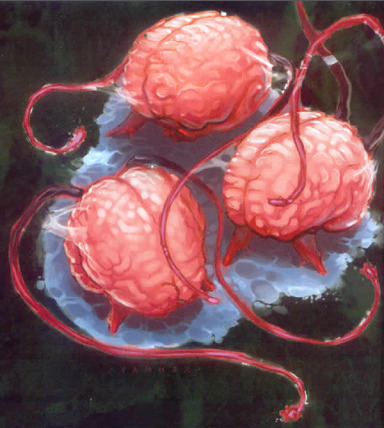
The Ustilagor
The Monster Manual II for 1st edition added a variant of the Intellect Devourer called the Ustilagor. In fact these creatures are not really Intellect Devourers at all. But their appearance makes them look rather similar. The Ustilagor is a fungi that appears to be a brain like growth with coral like appendages.
These creatures existed in first, second and third editions of Dungeons and Dragons but was not included in the later editions.
Like the Intellect Devourer they could attack psionically but only with id insinuation. They could only be psionically attacked in turn with psionic blast.
The Ustilagor could be physically attacked and had a rather high armor class (bad in first edition). It’s psionic abilities made it immune to most magic.
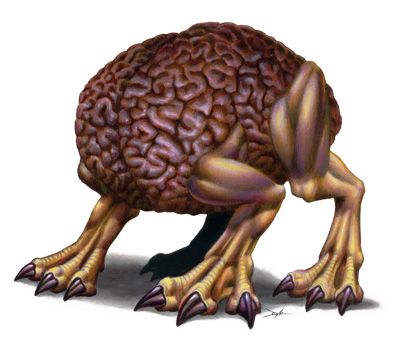
The Intellect Devourer in Dungeons and Dragons was a creature of nightmares
These creatures live the dark and hide in the shadows. They find a victim and stalk that victim until an opportune moment and then pounce. When they do attack they will attempt to do so by surprise. They will prefer opportunities when no one else will be aware that the attack has taken place. They will take over the body of their victim and will use this new host as a place to launch their next attack. Obviously the early edition versions of the Intellect Devourer were more dangerous. But even the Fifth Edition Intellect Devourer is capable of causing serious harm. One should be careful traveling the dark places beneath the earth for one of these creatures might be lurking just a little too close.
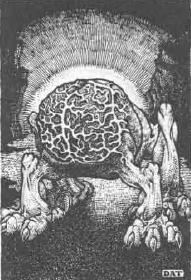
If you enjoyed this article then you might enjoy one of these
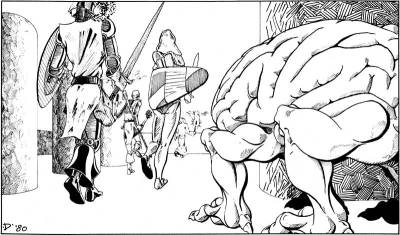


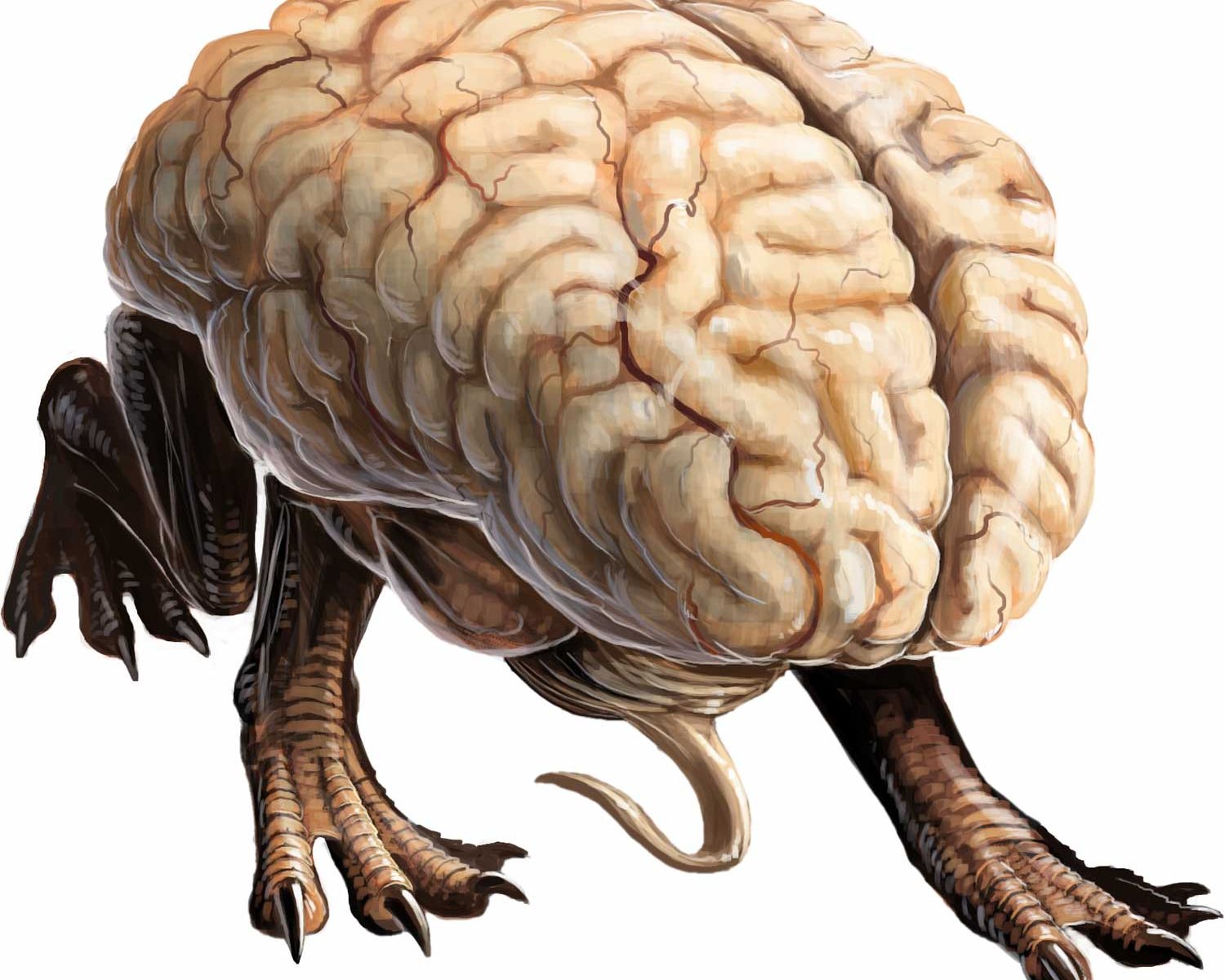
Good article and well-researched.
It’s versus its, dude. Your misuse of these should be corrected.
The monster’s nature was reshaped by Dave Trampier’s art. If you read the original description (in the little brown books—most of which is the same as the 1e MM’s), there’s nothing about it looking like a brain, only the legs are described. That’s because the original monster is an emulation of the gebbeth in LeGuin’s A Wizard of Earthsea: a taloned, faceless thing that possesses its victims’ bodies. Interestingly, LeGuin got the idea for a gebbeth after looking at a microscopic tardigrade (the water bear), with its hook-like legs and no head.
That is quite possible. I began with 1st edition and the picture of the brain with legs in the 1e Monster Manual. Those old 1e pictures were awesome for the time.
This was a fun read. I linked over here this week from my blog/podcast.
Thanks!